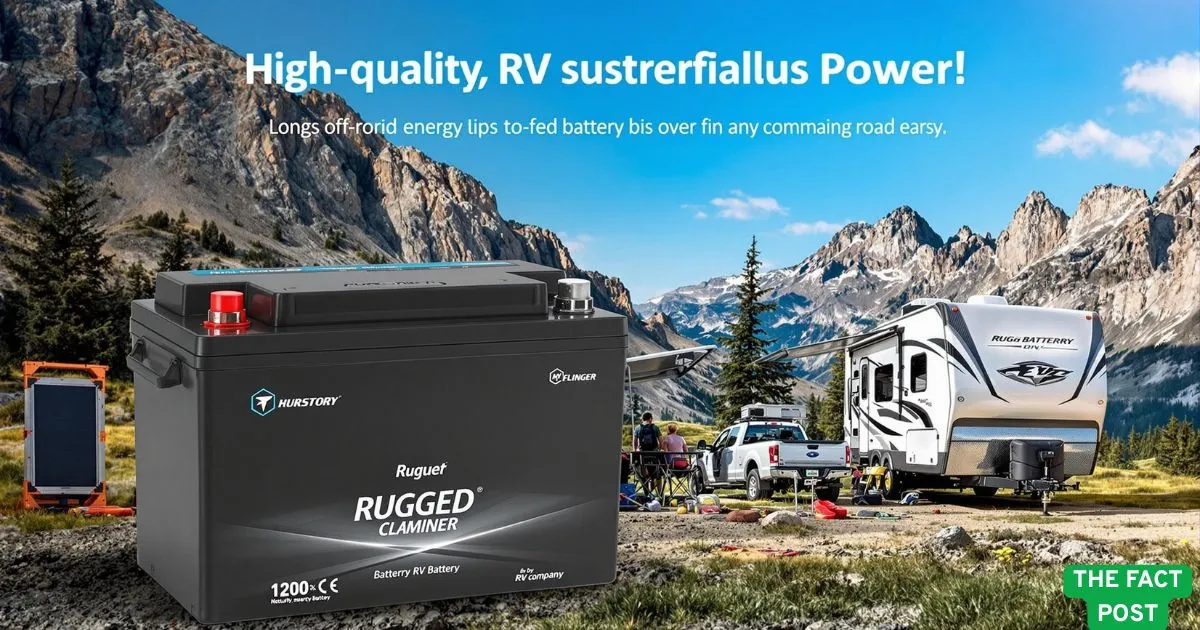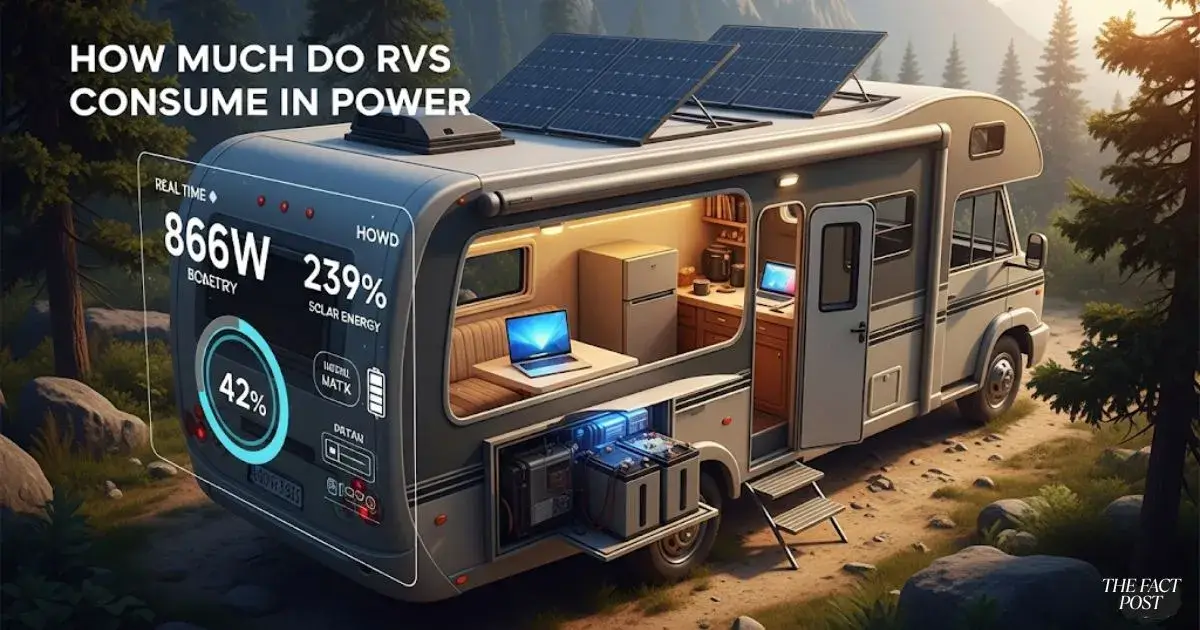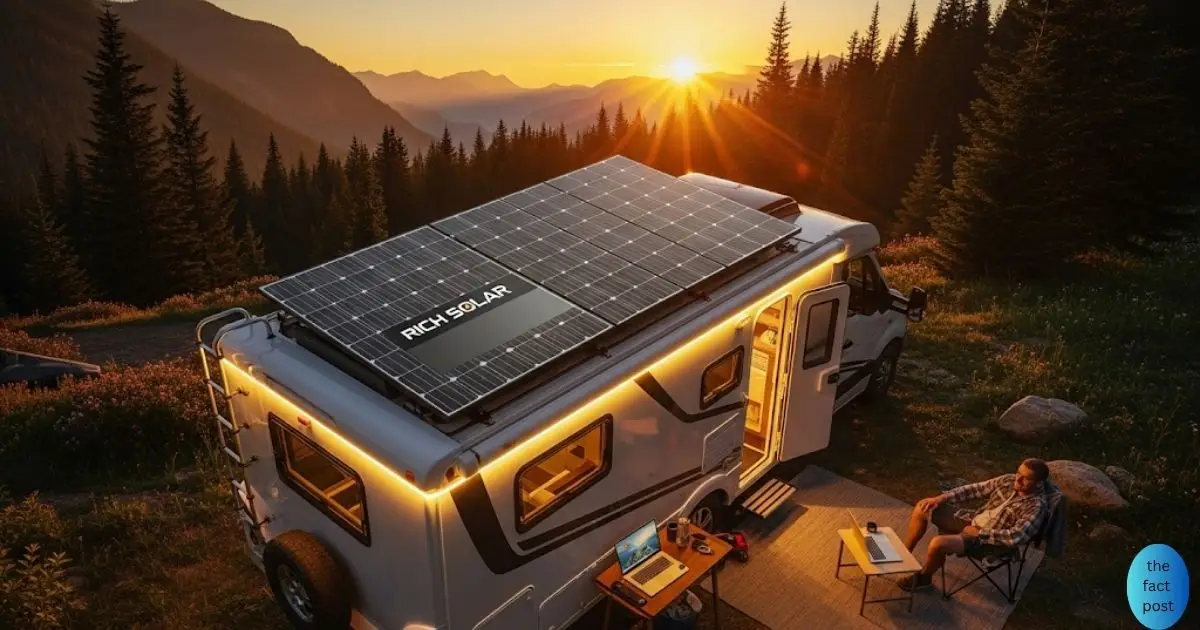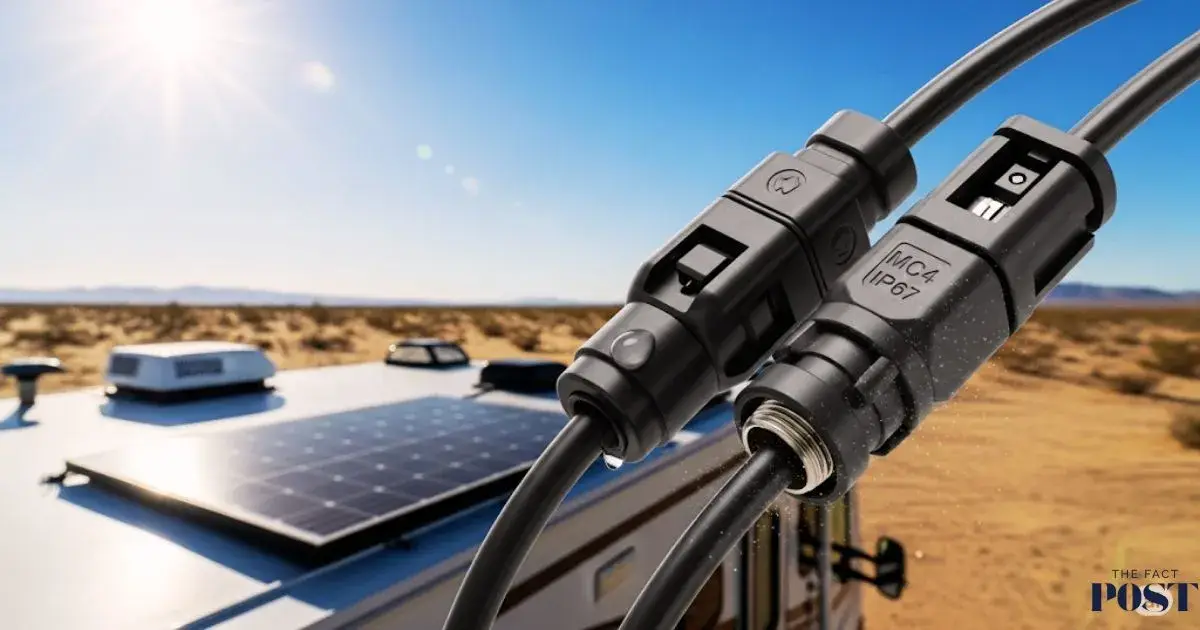RV Solar Panels
Product Reviews
"A realistic digital illustration of an off-grid RV parked in a scenic forest clearing under the sun, and 'Weight' with subtle icons. The RV is surrounded by nature, compact lithium iron phosphate battery on one side and a bulky VRLA battery on the other. Include labeled callouts showing 'Depth of Discharge', fire pit) nearby, with a light camping setup (chairs, with solar panels mounted on the roof and an open side compartment showing a comparison of two battery types: a sleek
ahsanmemon098i@gmail.com
0 Comments
4 Best RV Battery for Solar Power – Expert Deep Dive into Electric Battery Choices
TOC:
Table of Contents
Introduction
If you’re living the RV life or dreaming of off-grid adventures, the heart of your solar setup is your Best RV battery. It’s more than just energy storage; it’s your lifeline when the sun dips below the horizon. As someone who installs and tests RV solar systems weekly, I’ve learned that choosing the right battery chemistry and understanding key metrics like Depth of discharge, Charge cycle, and temperature behavior is essential.
Let’s dig deep into VRLA battery, Lithium, Lithium iron phosphate, Lithium‑ion battery, and even classic lead‑acid chemistry, with real-world examples that’ll help you make smart, actionable decisions
Why the Right Electric Battery Makes or Breaks Your RV Solar Setup 💡
Choosing a battery isn’t just about price tags. It’s about:
- Functionality: Running a fridge, water pump, lights, and maybe even a small heater demands reliable storage.
- Freedom: On a remote boondocking trip, your battery pack is your freedom bank.
- Longevity: The charge cycle lifespan determines how often you’ll replace your investment.
The wrong battery can leave you dead in the water — figuratively and literally.
Battery Chemistry Explained
VRLA Battery (Valve-Regulated Lead Acid)
- What it is: A sealed, maintenance-free electric battery.
- Pros: Affordable, hardy in freezing and cold conditions, dependable.
- Cons: Heavy, limited depth of discharge, around 400-600 charge cycles, and larger in volume per usable kilowatt-hour.
I once had a 200 Ah VRLA setup that weighed over 100 lb—and it barely made it through two boondocking seasons before sagging below safe voltage.
Lead‑Acid Battery (Flooded)
- What it is: Traditional battery requiring water maintenance.
- Pros: Cheapest upfront.
- Cons: Heavy, high-maintenance, sensitive to deep discharges, and poor long-term fit for solar-heavy use.
If you only use your RV occasionally, this works—but definitely not for serious solar living.
Lithium & Lithium-Ion Battery
Lithium iron phosphate (LiFePO₄) is fast becoming the standout Lithium chemistry for RVs:
- Pros:
- Lightweight (40–60% less weight than VRLA).
- High energy density: more kWh in less footprint.
- Deep depth of discharge (80–90%) without rapid degradation.
- Exceptional longevity: 3000–6000 charge cycles.
- Cons: Higher cost, but long-term savings are real. Requires a solid BMS and protection from temperature extremes, especially cold.
I swapped out a 300 lb VRLA bank for a 150 lb 300 Ah LiFePO₄ pack. The result? Twice the usable capacity and half the footprint. On a three-week winter trip, charging was easier and more reliable—even when temps dropped below freezing.
Key Metrics You Need to Know
Depth of Discharge (DOD)
DOD refers to how much battery use you allow before recharging. Here’s how it stacks up:
- VRLA battery: Ideal in the 50–60% DOD range.
- Lithium: 80–90% is normal, without damaging the battery.
On my measurement setup, I saw nearly 180 usable ampere-hours (Ah) from a 200 Ah lithium pack, versus only about 100 Ah from the same-size VRLA setup.
Charge Cycle
One full cycle = one use of 100% capacity. Battery life degrades with more cycles:
- VRLA: ~400–600 cycles typical.
- Lithium: Up to 6000 cycles.
Do the math: full-time RVers using lithium might not replace batteries for 10+ years, while VRLA users might be changing every 2–3 years.
Capacity: Ampere-Hour & Kilowatt-Hour
Know your daily consumption. For example:
- Fridge: 3 Ah/hour × 24 hours = 72 Ah/day.
- Lights, water pump, electronics: add 50 Ah.
- Total ~120 Ah/day = ~1.44 kWh.
Want two extra days of autonomy? Multiply that, and pick a bank accordingly.
Temperature and Cold Weather Performance
- Freezing temperatures kill capacity and battery life, especially for Lithium.
- VRLA battery handles cold better but still benefits from insulation.
- My go-to setup: insulating foam board and a 100 W strip heater triggered at 4 °C for Lithium packs. It keeps the BMS alive and ensures full power output down to –10 °C.
Real-World Case Study: Lithium Upgrade
Last winter, I swapped a VRLA bank for 400 Ah LiFePO₄ in my camper van:
- Got 360 Ah usable (90% depth of discharge).
- Solar charging finished in just under 6 hours instead of 10.
- Battery pack stayed above 80% even when ambient temps hovered around 0 °C, thanks to insulation and a thermostat.
Trips were easier. Power worries—gone.
Space, Weight, and Volume Considerations
- Lithium wins on weight and volume: about 50% smaller, 60% lighter.
- That frees up space for water tanks, gear, or interior comfort additions.
- VRLA simply demands planning: stronger mounts, extra ventilation, and more weight tolerance.
Safety First: Battery Management & Maintenance
- Lithium needs a good BMS to manage cell voltage and temperature.
- VRLA also needs proper ventilation—excessive charging can emit small amounts of hydrogen gas.
- Use proper fuses and wiring. Even a bit of negligence can cause a fire risk.
- Inspect voltage regularly and monitor depth of discharge to avoid stressing your battery.
Cost vs. Value: Making the Right Decision
- Lithium: higher upfront cost, but spreads over thousands of charge cycles, delivering more kWh-per-dollar over time.
- VRLA battery: low upfront cost, but expect replacements every couple years.
- Factor in solar panel expenses: more efficient batteries require fewer panels to recharge, saving in installation and hardware costs.
Practical Buying Guide
- Calculate daily energy use.
- Choose a bank that covers at least 2x your daily demand.
- Pick Lithium if:
- You want weight savings.
- You quiver at the thought of replacing batteries often.
- You plan long, frequent camping trips.
- Pick VRLA battery if:
- Budget is tight.
- You use the RV infrequently.
- You don’t mind occasional replacements.
FAQs
Q1: Can Lithium batteries freeze?
Yes. If ambient temps hit freezing, battery performance drops sharply. Install insulation and heaters, especially if temps hit –10 °C or lower.
Q2: What’s a typical charge cycle lifespan difference?
VRLA battery offers around 400–600 cycles. Lithium iron phosphate may give you 3000–6000 — potentially a decade or more of life.
Q3: Do lithium packs need watering or maintenance?
No. Just monitor voltage, temperature, and ensure the BMS functions correctly.
Q4: How to measure Depth of Discharge?
Check battery state-of-charge (SOC) percent via your BMS. Discharge to 20–30% for lithium, and above 50% state-of-charge for VRLA.
Q5: Are lithium batteries safe in RVs?
Yes, with a proper BMS and correct wiring. They also weigh less and are safer to drive with.
Q6: Should I upgrade old lead-acid to lithium?
If you use solar frequently, yes. Upgrading saves long-term money and hassle. For budget occasional use, a new VRLA may suffice.
Summary & Call to Action [ Best RV Battery]
The Best RV battery is the heart of any RV solar system. Metrics like depth of discharge, charge cycle, weight, and kilowatt-hour capacity all matter. While VRLA battery offers budget-friendly reliability, Lithium iron phosphate stands out for serious solar life—bringing weight savings, longer lifespan, and real autonomy.
Ready for less weight, more power, and peace of mind? Start sizing your battery bank based on true usage and dive into Lithium. Questions? Want a hands-on parts list or wiring guide? Just reach out—I’m happy to help you DIY your best system ever.





Post Comment